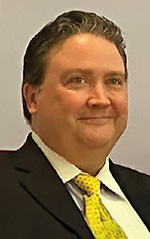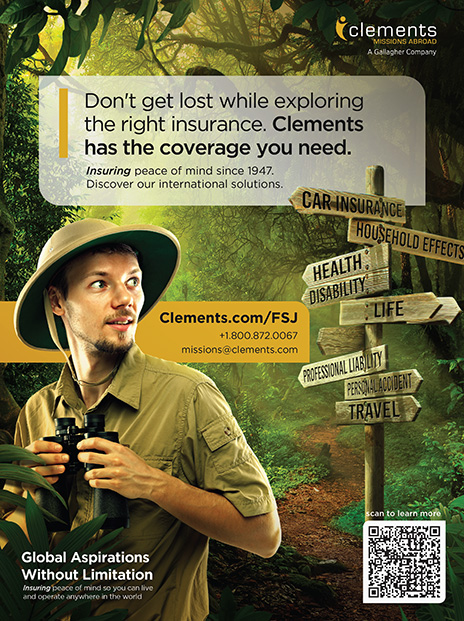A Comprehensive Strategic Partnership: U.S.-Vietnam Ties at 30 Years
The U.S. and Vietnam have developed a partnership that illustrates the value of professional diplomacy.
BY MARC E. KNAPPER
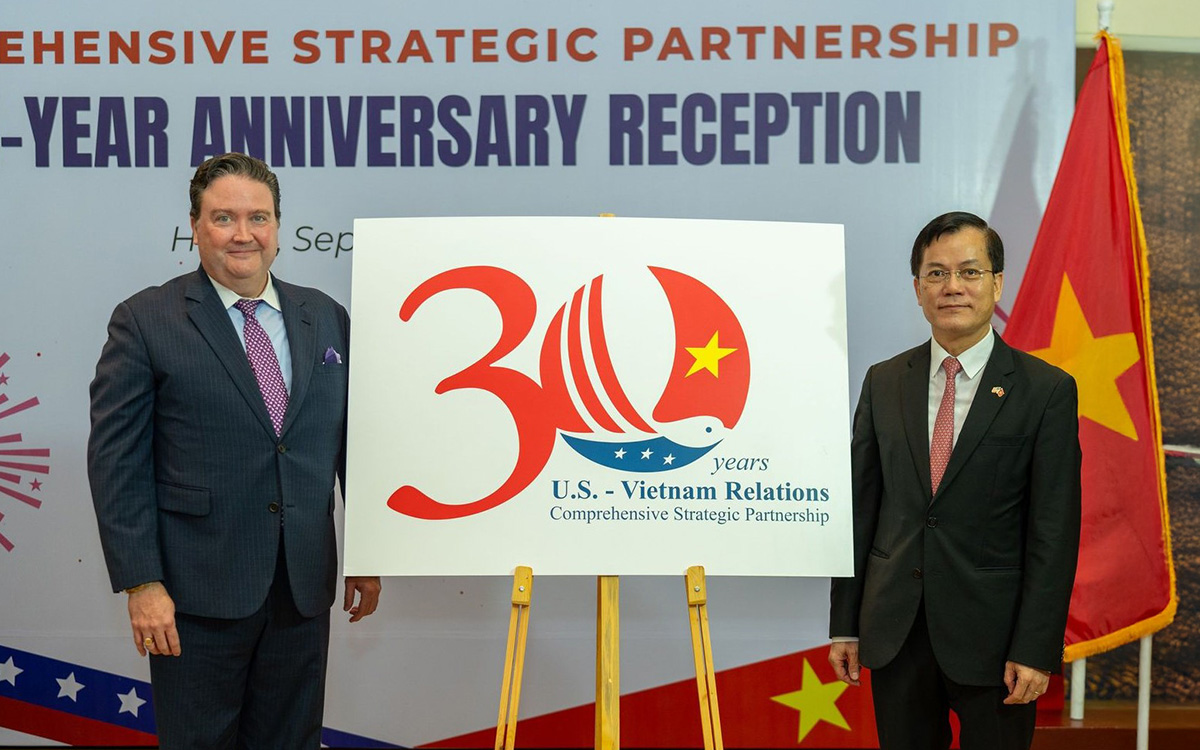
Ambassador Marc Knapper and Vietnam Vice Foreign Minister Hà Kim Ngọc unveil the 30th anniversary logo at the celebration of the U.S.-Vietnam Comprehensive Strategic Partnership’s first anniversary, September 2024.
U.S. Embassy Hanoi
Few moments better reflect the progress of U.S.-Vietnam relations than the largest peacetime deployment of U.S. military equipment to Vietnam since the war displayed at the 2024 Vietnam Defense Expo. Standing alongside U.S. Indo-Pacific Command Commander Admiral Sam Paparo, I underscored the U.S. commitment to supporting Vietnam in modernizing its defense force. Ensuring Vietnam has the capabilities needed to protect its interests at sea, in the air, on the ground, and in cyberspace, including in the South China Sea, provides security for the United States as part of our strategy to keep the Indo-Pacific free and open.
At the conclusion of my remarks, hundreds of Vietnamese military, veterans, and members of the public lined up to take photos with visiting U.S. service members in front of the U.S. military equipment, which included a C-130J, two A-10 attack aircraft, a Stryker combat vehicle, and an M777 howitzer artillery piece. The public’s enthusiasm for bilateral collaboration was evident. This type of event would have been unimaginable just a few years ago, let alone when I served as the political chief here two decades ago.
This moment, and so many others over the last year, have been a clear testament to the growth of the U.S.-Vietnam relationship, which is now a Comprehensive Strategic Partnership (CSP), the highest level of partnership in Vietnam’s diplomatic hierarchy.
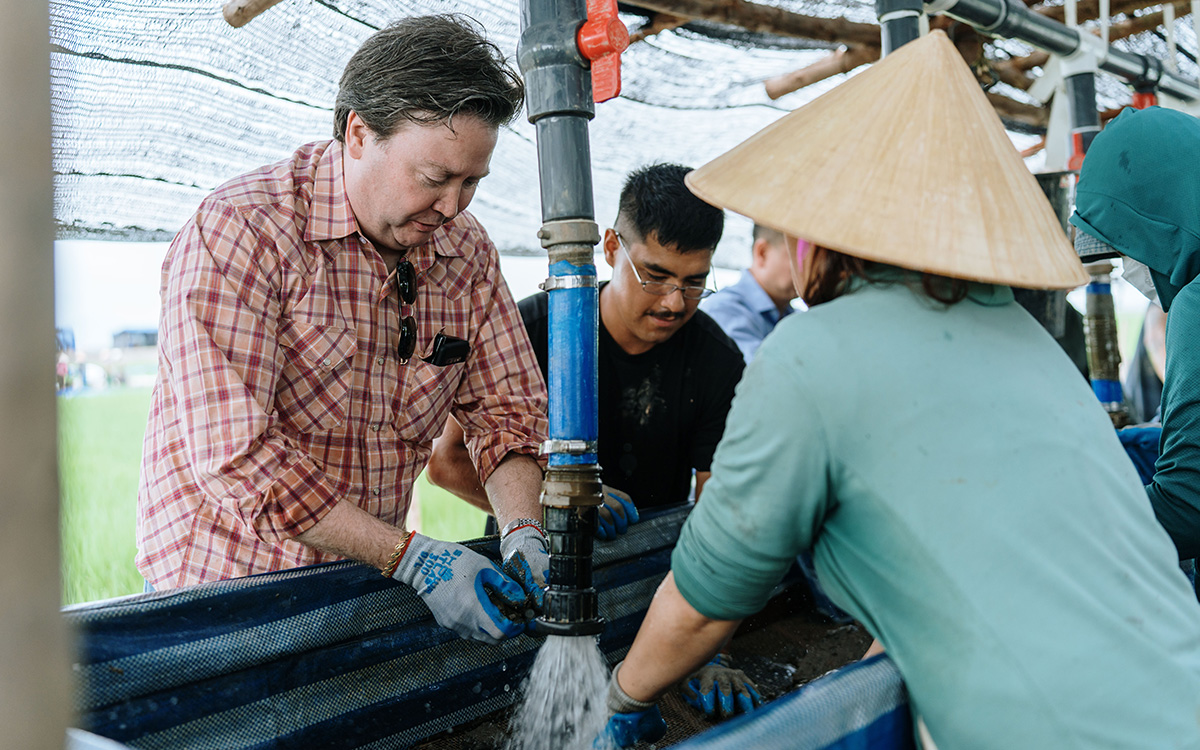
Ambassador Marc Knapper joins an onsite POW/MIA operation in Quang Binh province, March 2023.
U.S. Embassy Hanoi
Ambitious Goals
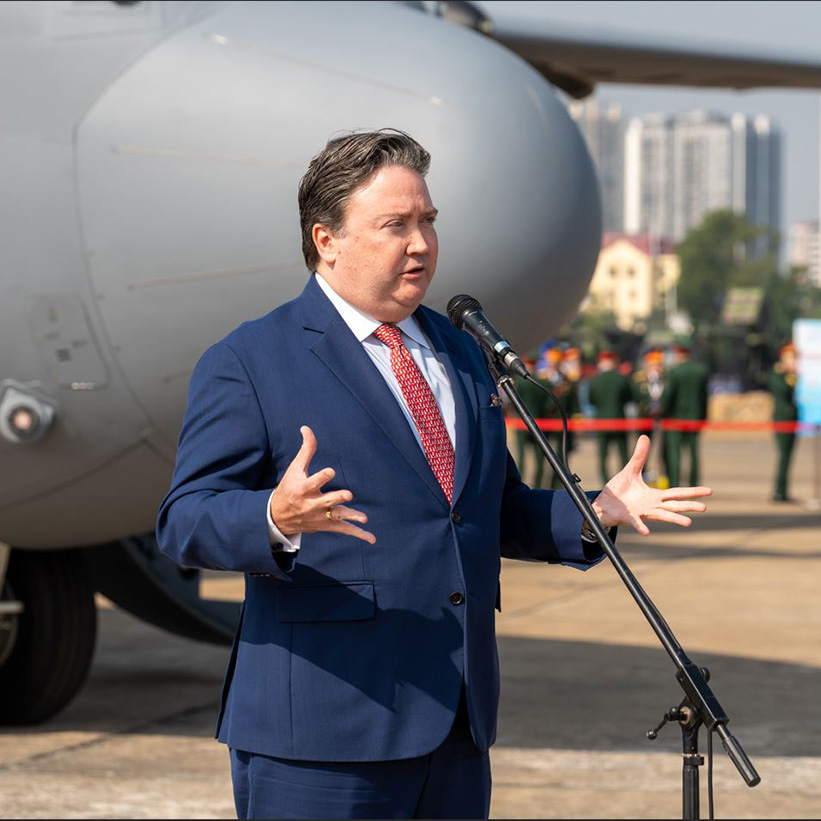
Ambassador Marc Knapper delivers remarks at the second Vietnam International Defense Expo at Gia Lam Airport in Hanoi, December 2024.
U.S. Embassy Hanoi
The progress in our bilateral relationship took decades of hard work, collaboration, and building on the success of past Mission Vietnam teams and my seven ambassadorial predecessors. Under the CSP framework, our two countries are addressing shared challenges and seizing opportunities in ways that make America stronger, safer, and more prosperous.
With a population of more than 100 million individuals, 45 percent of whom are under 30, Vietnam has set ambitious goals for its economic development, many of which will benefit U.S. national security by ensuring reliable and sustainable supply chains. Education remains one of the strongest bridges between our nations. Vietnam ranks sixth in sending international students to the United States, with some 30,000 students studying in the United States, contributing nearly $1 billion to the U.S. economy.
We bring the expertise of the U.S. private sector and U.S. universities into our collaboration with Vietnam to modernize its higher education. Programs like Fulbright, Peace Corps, English language training, and Young Southeast Asian Leaders Initiative (YSEALI) equip young Vietnamese with essential skills to be competitive partners for the United States in the future. There are now almost 8,000 Vietnamese alumni of U.S. government-funded exchange programs. Vietnamese students and the Government of Vietnam want that number to continue to grow.
We are also developing new areas of economic collaboration as Vietnam seeks to move up the value chain, and the world looks to strengthen and diversify critical supply chains. We are working together to address requirements that are vital to attracting more high-tech investment, such as strong strategic trade controls, a robust cybersecurity regime, secure critical infrastructure, and a modern and efficient regulatory environment.
These are not idle conversations. Our joint research efforts and science and technology collaboration are increasingly sophisticated and dynamic, an indication of where Vietnam wants to be and who it wants to partner with to support economic growth. While U.S. companies have been steady investors in Vietnam for decades, we are now seeing a growing number of Vietnamese investments in the United States. Vietnam proudly led the largest delegation of Asian companies to SelectUSA in 2024 and hopes to do so again in 2025.
Another area that reflects the growth of cooperation is our work together on health. U.S. support has saved countless lives affected by HIV and laid the groundwork for the robust health security partnership we have today. We have supported Vietnam’s efforts to build a capable multisectoral public health workforce and equipped laboratories with advanced diagnostic capabilities like genomic sequencing to detect influenza and other potential threats to global health security.
All these areas of collaboration support Vietnam’s bold goals: becoming a digital economy by 2035, a high-income nation by 2045, and achieving net-zero emissions by 2050. Our collaboration spans nearly all aspects from agriculture to space cooperation. As I often say, if it’s worth doing, the United States and Vietnam are doing it.
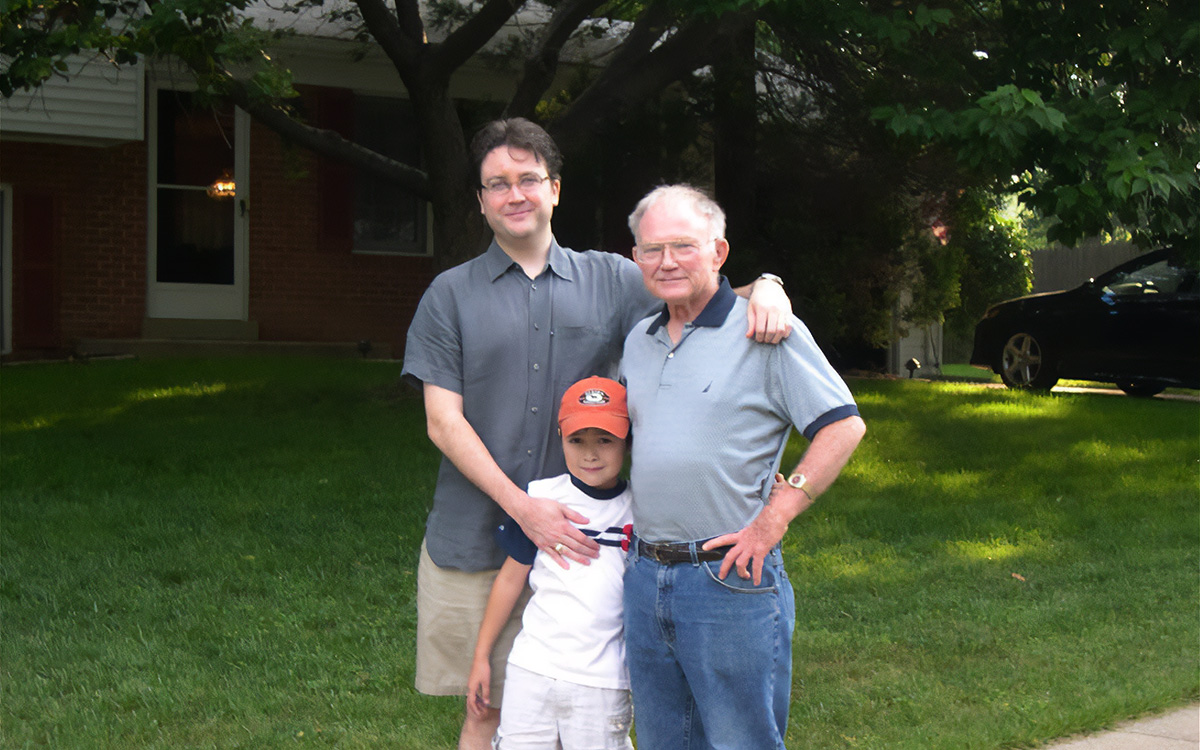
Amb. Knapper (left) with his father and his son.
Courtesy of Marc Knapper
Reconciliation Is the Foundation
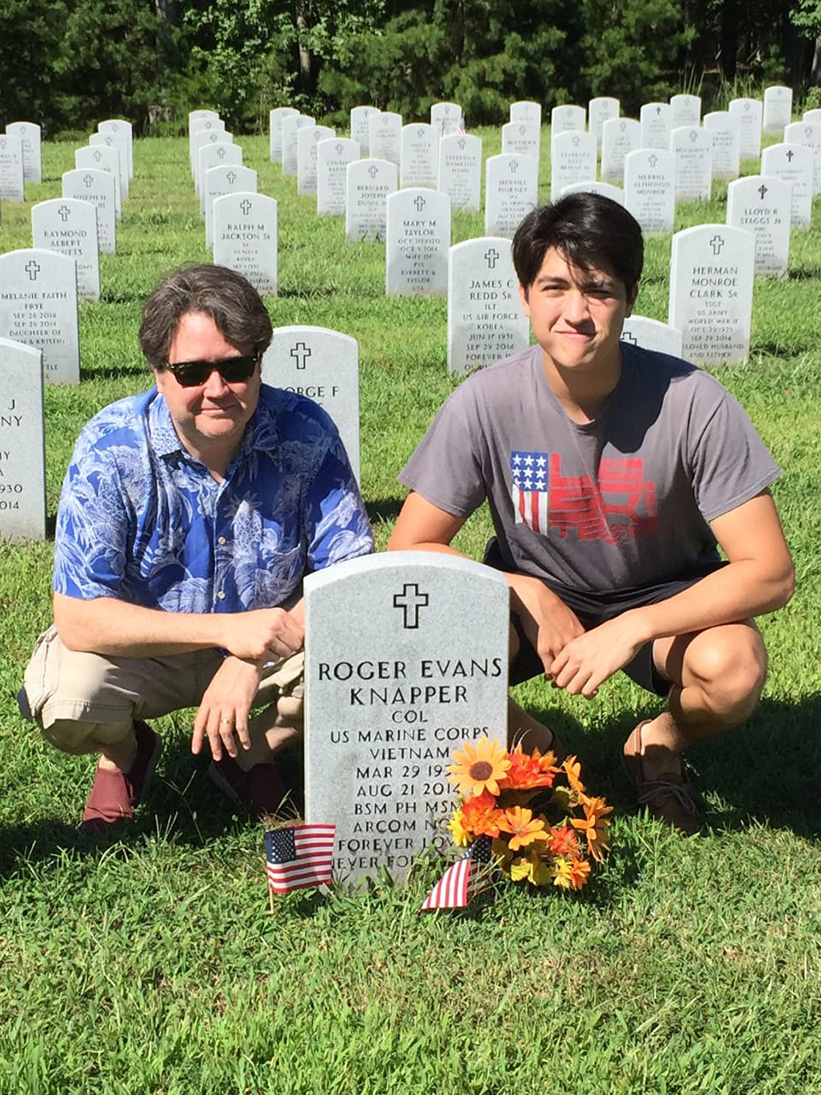
Ambassador Marc Knapper and his son visit his father’s grave after his death in 2014.
Courtesy of Marc Knapper
While 2025 marks 30 years of diplomatic relations between the United States and Vietnam, we also recognize the historical significance of where we are today by remembering 50 years since the end of the war.
The anniversary is personal to me, the son of a veteran. My family’s connections to Vietnam span generations. My grandmother lived in Saigon in the 1960s. My father, Marine Colonel Roger E. Knapper, served in Da Nang and Hue during the height of the war. His experiences shaped his life and mine.
In 2004 my son and I accompanied my father on his return trip to Vietnam, fulfilling his dream of seeing the country at peace and thriving after experiencing the horrors of war. Together, we witnessed a nation transformed—one that had rebuilt itself into a beacon of resilience and progress. That journey was a clear reminder of the sacrifices on both sides and the enduring importance of reconciliation.
My father has since passed away, but his experience stays with me during my talks with American veterans revisiting former battlefields or meeting with former enemy combatants. These encounters reflect the full-circle nature of reconciliation and the power of shared understanding. American visitors, to include U.S. Vietnam War veterans, often tell me they are surprised by the warm reception they receive from the Vietnamese people “despite” our history. I believe it is because of our steadfast commitment to reconciliation about that history, and having overcome so much together, that Vietnam is receptive to Americans.
Reconciliation remains the foundation of our partnership. The effort began with the search for missing American service members, followed later by assisting persons with disabilities, clearing unexploded ordnance, and remediating dioxin hotspots.
One of the most moving moments of my tenure was participating in a Joint Field Activity with the Defense POW/MIA Accounting Agency (DPAA) and Vietnam’s National Office for the Seeking of Missing Persons. In Quang Binh province, I sifted through soil to find bone fragments and twisted metal shards of aircraft equipment to recover the remains of those missing in action. I had the honor of participating in a repatriation ceremony following the site visit and later learned that the remains were identified as those of U.S. Marine Corps Captain Ronald W. Forrester from Odessa, Texas, and Captain Ralph J. Chipman from American Fork, Utah, who were lost in action in 1972. Supporting the work to find missing American military and bring them home has been one of the most meaningful aspects of my work in Vietnam.
Through a separate effort, known as the Vietnam Wartime Accounting Initiative, we are also now helping Vietnam locate, gather, and identify Vietnamese personnel killed during the war. With the help of Harvard University, we also return archival research and personal effects of Vietnamese soldiers to veterans and their family members. For some, these artifacts are among the only personal effects that remain of their loved ones. Witnessing these artifacts being returned is a solemn reminder of the human cost of conflict and the healing power of reconciliation. And this work, collectively, has helped to build trust and mutual understanding between the United States and Vietnam in ways that have enabled us to expand bilateral cooperation in key areas such as defense, law enforcement, education, and trade.
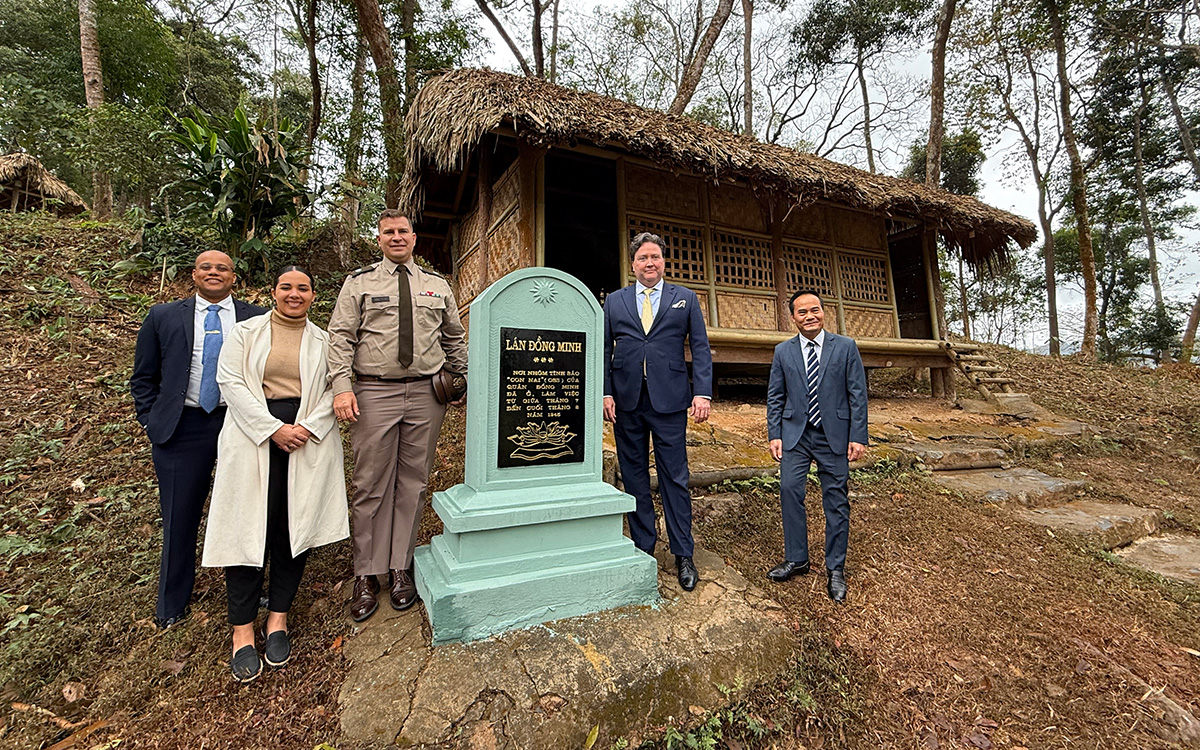
Ambassador Marc Knapper (second from right) and the U.S. embassy delegation visit Tuyen Quang, the birthplace of the U.S.-Vietnam friendship, where 80 years ago the OSS “Deer Team” landed to cooperate with Vietnam during World War II, February 2025.
U.S. Embassy Hanoi
A Partnership for the Future
Despite our progress, the United States and Vietnam do not always see eye to eye on every issue, but we address these differences respectfully and frankly. Our annual human rights dialogue reflects this approach. While raising our concerns about the human rights situation in Vietnam, we emphasize respect and seek to identify areas of collaboration such as religious freedom, the rule of law, and legal reform.
What has consistently driven growth in this relationship is the willingness on both sides to seek areas of cooperation, despite our differing political systems and our painful past.
As ambassador, I believe that to truly strengthen our ties, we must engage deeply and directly with the people and leaders of Vietnam. This commitment has taken me to 45 of the country’s 63 provinces, where I’ve had the privilege of meeting provincial officials, joining U.S.-Vietnam friendship events, and witnessing the shared optimism for our future by engaging with young people. In all my visits, my hosts express enthusiasm and excitement for more partnership, more collaboration in education, and more engagement with Americans. In this spirit, we will celebrate 30 years of bilateral relations with a series of friendship festivals, visits to U.S. companies, and other anniversary events throughout the country.
The ongoing construction of our new embassy campus, set for completion in 2030, symbolizes our enduring relationship with Vietnam. We are lucky to have many members of Mission Vietnam who, like me, have served here multiple times. But as I can attest, we have never served in the “same” Vietnam twice, because this country is growing and changing fast.
Leading this country team to advance our Comprehensive Strategic Partnership with Vietnam feels like the fulfillment of what was always possible. As we celebrate 30 years of U.S.-Vietnam relations, I am confident our next chapter will bring even greater achievements that make our countries safer, stronger, and more prosperous.
Follow us @USEmbassyVietnam on Instagram and Facebook to join the journey.
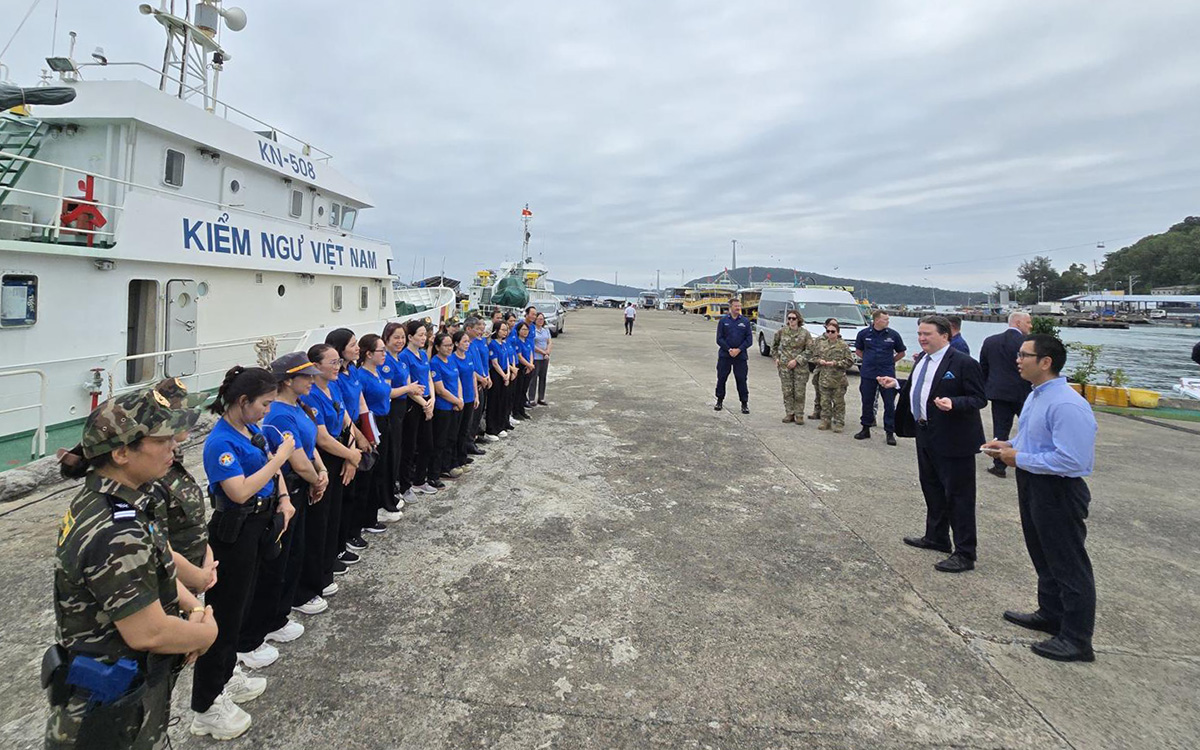
Ambassador Marc Knapper speaks to maritime law enforcement officers during boarding officer course at An Thoi Port in Phu Quoc, December 2024.
U.S. Embassy Hanoi
When sharing or linking to FSJ articles online, which we welcome and encourage, please be sure to cite the magazine (The Foreign Service Journal) and the month and year of publication. Please check the permissions page for further details.
Read More...
- “Vietnam Today” by Murray Hiebert, The Foreign Service Journal, April 2015
- “Ambassador Marc E. Knapper Opens the U.S.-Vietnam Cooperation Center,” U.S. Indo-Pacific Command, March 2022
- “Vietnam, US forge stronger trade, investment partnership,” VietnamPlus News, February 2025

